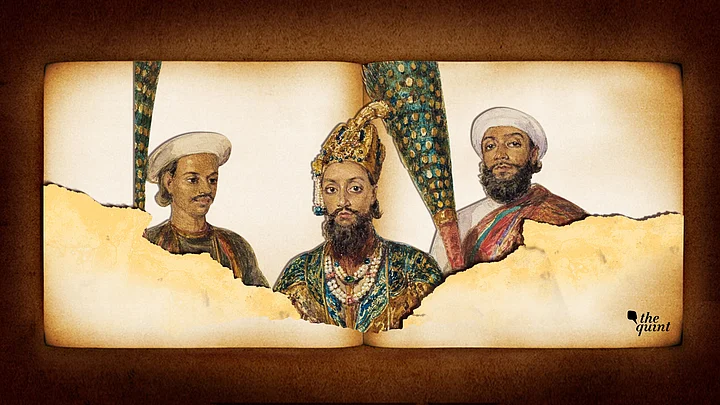While all the controversies surrounding Sanjay Leela Bhansali’s Padmaavat have arisen from the film’s portrayal of Rani Padmini of Chittor, it is the role of the Muslim ruler Alauddin Khilji that attracted eyeballs after the release of the movie.
Many have claimed Khilji’s portrayal to be completely one-dimensional – evil through and through. Even Ranveer Singh termed the character he essayed a ‘monster’.
However, was the ruler always depicted thus? And what more do history and literature tell us about him?
Ramya Sreenivasan’s 2002 essay Alauddin Khalji Remembered: Conquest, Gender and Community in Medieval Rajput Narratives affords us some answers.
Sreenivasan’s analysis of four Rajput texts – two from the 15th and two from the 16th Century – provides Khilji’s character with a little more depth.
1. A Khilji Honourable in Defeat, in Chitai-Varta
Chitai-Varta, written by Narayandas, in c.1520, traces the journey of Alauddin as the ruler of the Delhi Sultanate, and Chitai, the daughter of Alauddin’s subordinate. Alauddin, enamoured by Chitai’s beauty, wants her for himself. However, over the course of the narrative, it is seen that Chitai, after being ‘won’ by Khilji, pleads him to treat her like his daughter. He honours her and acquiesces to her request.
When Chitai’s previous husband comes for her and, in the garb of a mendicant, ‘wins’ her back, Alauddin promises him that he can take Chitai back. When Chitai refuses, Alauddin attempts to placate her in order to keep his word to her husband. Ultimately, she goes back to her kingdom with the mendicant. Khilji even gives the couple additional revenues from his treasury.
2. Khilji Through the Eyes of the Rajput Rulers
The four narratives studied by Sreenivasan all glorify Rajput lineage. This directly benefited the Rajput rulers of the time, who most likely were the patrons for such texts. These pieces all narrated the defeats faced by the ancestors of the Rajputs at the hands of Khilji.
Hence, as Sreenivasan observes, these narratives are ‘Rajput reconstructions of Khilji’s conquests’.
It must be noted that Khilji was the first Muslim ruler to make inroads in Rajasthan, whose campaigns were largely destructive in the Rajput heartland. Hence, his description in the four literary pieces stem from the traditional formula for representing foreign invaders. Also, the deaths of the Rajput princes in the pieces are reiterated to ‘confirm their status as the ideal king’.
3. Khilji’s Conquests and the Rajput Queens
All four narratives maintain the fact that the ‘elite woman’ is symbolic of the ‘honour’ of her kingdom. Thus, even after a conquest, the Rajput king’s superiority is denoted when he spurns an offer of marriage alliance from the Sultan.
For a Rajput ruler in medieval India, the wife represented a network of political alliances and his honour within that network. In both Padmavat and Chitai-Varta, the Rajput ruler prefers paying tribute and giving Khilji over-lordship to giving up his wife or daughter.
Also, it must be noted that the pieces studied did not depict just the Sultan ruler as a threat to the queen, but also the neighboring Rajput kings.
4. The ‘Real’ Motive Behind Khilji’s Conquests
While the 15th Century texts studied by Sreenivasan show the Rajput rulers as being fiercely protective of their territory, the 16th Century texts show the rulers being more or less fine with accepting Khilji as their overlord; what they have a problem with is letting Khilji take their wives and daughters.
This sharp contrast makes Sreenivasan question the veracity of Khilji’s portrayal in the poems.
What drove his conquests? Was it imperial ambition? What did Khilji desire, territory or the Rajput queens?
Amir Khusrau and Ziyauddin Barani, both historians of Khilji’s reign, do not mention Padmini in their recounting of the ruler’s conquests. Similarly, recounting Khilji’s conquest of Ranthambhor, another historian, Isami, never mentions the role of the king’s daughter, it’s only the literary texts which mention her.
Sreenivasan says the increased vulnerability of Rajput women during the 16th Century – when Padmavat was written – may have contributed to Khilji increasingly being depicted as a ruler who desired Rajput queens.
In conclusion, Sreenivasan states that Khilji’s portrayal in Rajput texts says more about the Rajput rulers and dynasties of the 15th and 16th centuries than they do about Khilji himself.
(We Indians have much to talk about these days. But what would you tell India if you had the chance? Pick up the phone and write or record your Letter To India. Don’t be silent, tell her how you feel. Mail us your letter at lettertoindia@thequint.com. We’ll make sure India gets your message)
(At The Quint, we question everything. Play an active role in shaping our journalism by becoming a member today.)
